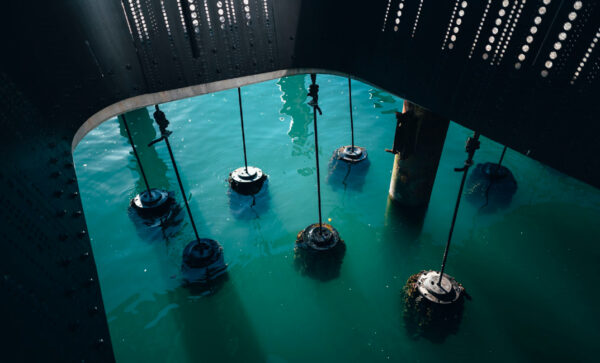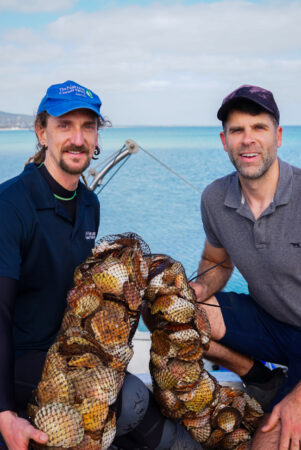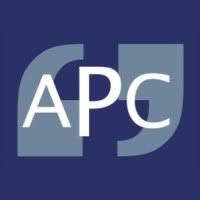During my science degree at Melbourne University, I fell in love with all things aquatic—marine botany, zoology, and the incredible life beneath the waves. That fascination has never left me. To this day, I’m still enchanted by the magic of Port Phillip Bay.

But I’m also deeply concerned. Too few people realise how much we rely on the health of this ecosystem. If the bay declines further, we could see more algal blooms, bad smells, and fish die-offs like those happening in other parts of Australia.
Over the past few decades, the bay has lost a staggering amount of marine life: 95% of its Blue Mussel reefs, 90% of its Golden Kelp, and 99% of Giant Kelp across Victoria. These aren’t just pretty underwater features—they’re essential. Mussels filter and clean the water, kelp captures carbon and provides shelter, and both create crucial habitats for fish and other marine life. Their loss has taken a toll on the bay’s health.
That’s why I was so excited to hear about a new reef restoration project that brings together mussels and kelp to help our marine ecosystems recover.
Think of mussels as tiny underwater vacuum cleaners, or like the air purifiers we all used during COVID—removing excess nutrients from the water and making it cleaner. Kelp, on the other hand, offers shelter and breeding grounds for small fish and invertebrates, and even helps baby mussels settle more easily. “Evidence shows that kelp can increase shellfish settlement, especially on the top of the reef where other algae can take over,” explains Scott Breschkin, Conservation Officer with The Nature Conservancy (TNC). And as a bonus, kelp also absorbs carbon dioxide as it grows, helping to reduce our impact on the climate.
This is the first time in Victoria that a project has combined marine plants and animals in this way to accelerate reef recovery. It’s been done elsewhere—Auckland is a great example—but it’s new for us.
The Nature Conservancy, in partnership with SeaGen Aquaculture, has just launched the Port Phillip Bay Multispecies Reef Restoration Project, an exciting trial that pairs Golden Kelp with Blue Mussels to give damaged reefs a new lease on life.
So, what’s actually happening beneath the surface?
TNC and its partners are planting around one million juvenile Blue Mussels and several thousand Golden Kelp plants across two hectares of reef near Dromana. These mussels aren’t your average seafood—they’re specially grown on recycled shells and biodegradable potato starch, which makes it easier to plant them in large numbers.
“It’s the first time we’ve tried using juvenile mussels like this,” says Breschkin. “We’re hoping this higher density will help them settle better and build strong, lasting reef communities.”

This is where SeaGen Aquaculture’s innovation comes in. They’re using hatchery techniques—usually for food production—to help restore wild populations. “Aquaculture can and should play a really important role in recovering native species,” says Dr Chris Gillies, Director of SeaGen. “We’re using the same technology that grows seafood to support large-scale restoration.”
The project is generously supported by The Ross Trust, a philanthropic foundation that backs bold and creative environmental work around Victoria.
It’s such a positive step—and while it’s wonderful to see it happening in Dromana, I’d love to see something similar happening here in the west. There’s real potential for Hobsons Bay to lead in marine restoration too.
One great example to learn from is Auckland. When the city redeveloped its waterfront in 2021, it created Te Wānanga, a beautiful new public space that also includes an ecological restoration project. Beneath the structure, they suspended 600 metres of ropes seeded with green-lipped mussels (kūtai). Four years on, those mussels are thriving.
These mussels aren’t for eating—they’re working hard, filtering between 150 and 200 litres of seawater each day. They improve water quality and create homes for other marine species.
But what I love most about Auckland’s approach is that they didn’t just restore the ecosystem—they invited the community into it. They designed the public space so people could see into the harbour and watch the mussels grow and flourish. It connects people to the living system right beneath their feet.
TNC, SeaGen Aquaculture and Hobsons Bay City Council let’s work together to extend the work to this side!

